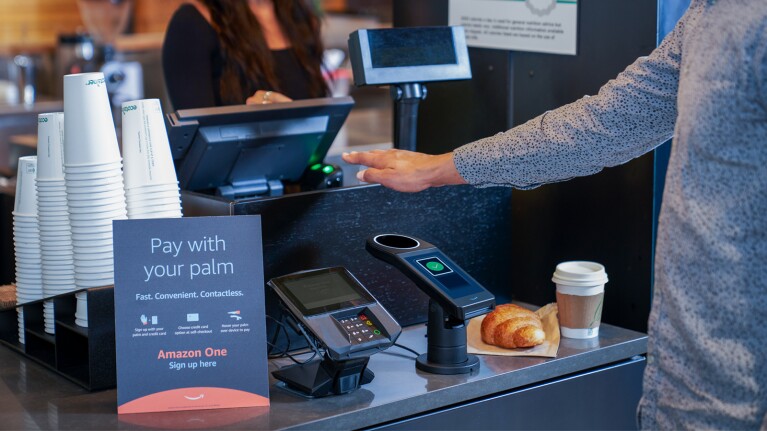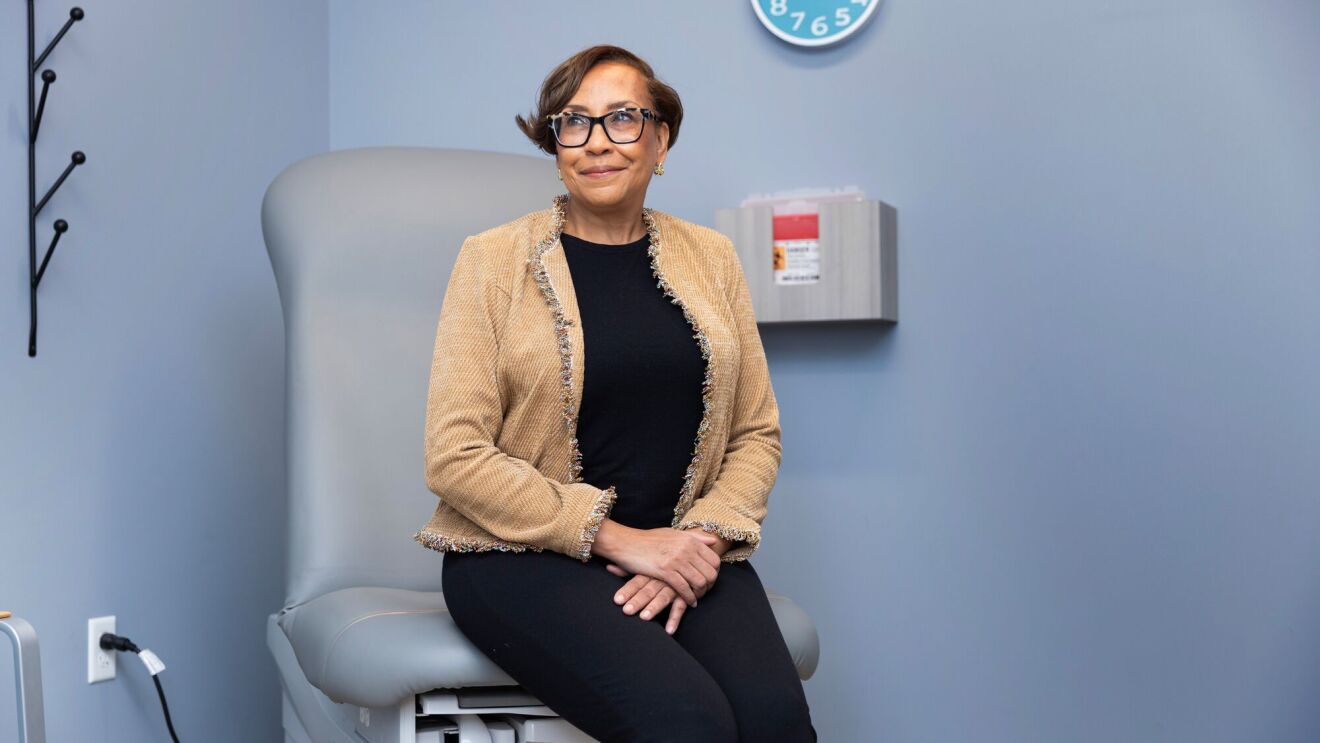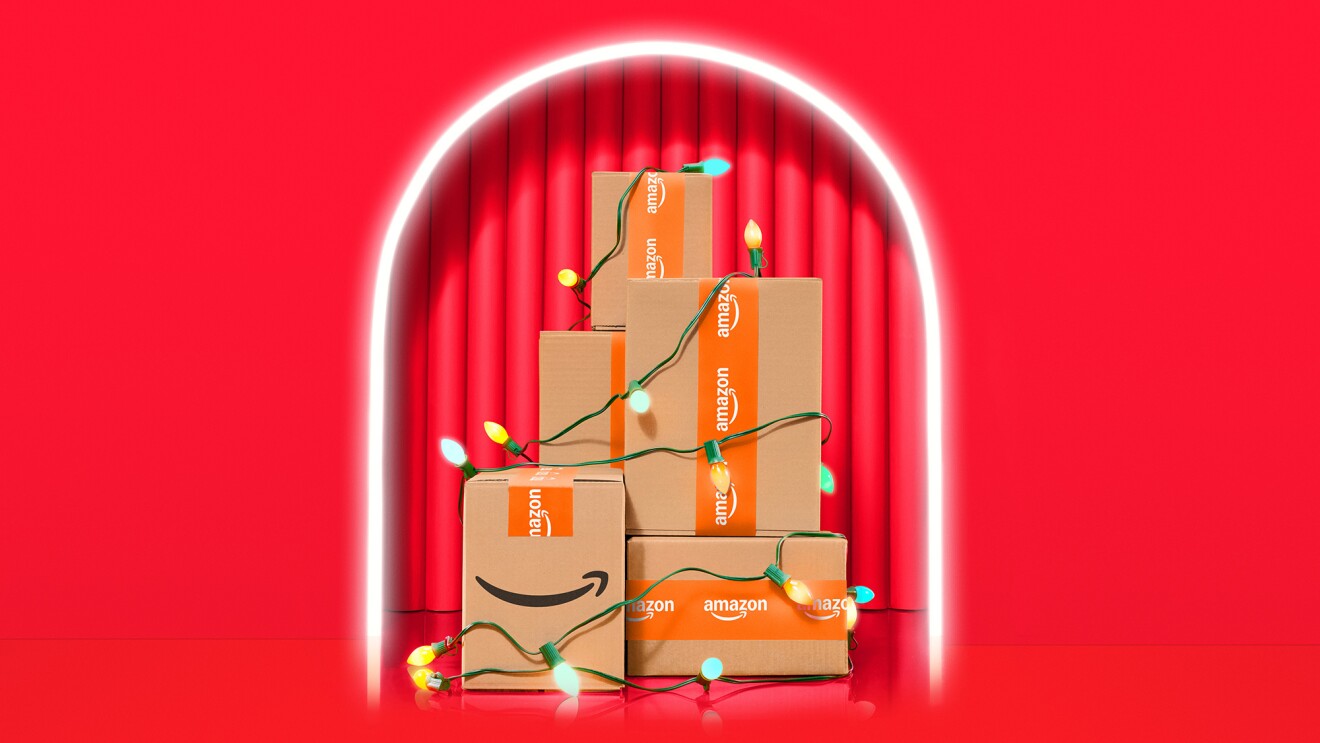Page overview
With Amazon One, the customer is always in control
With palm recognition, you decide when and where to use it. When we started designing Amazon One, we had many biometric options—voice, fingerprint, retina, and more—and we chose palm for a few important reasons:
1. It’s intentional. Your palm images are never captured passively. This means you need to make an active, intentional gesture of hovering your palm over the Amazon One device to be identified. Amazon One puts customers in control.
2. It’s gender and race agnostic. Amazon One operates beyond the normal light spectrum and cannot accurately perceive sex or skin tone, and it does not detect your gender or race.
3. It’s highly accurate. Amazon One is 100 times more accurate than scanning two irises. It raises the bar for biometric identification by combining palm and vein imagery, and after millions of interactions among hundreds of thousands of enrolled identities, we have not had a single false positive. We continue to invest in research to ensure accuracy and improve the service for our customers.

Emerging technologies are often met with apprehension, and we’ve heard some people say, “If I lose my credit card, I can get a new one. But if someone steals my palm image, I cannot change my palm.” Let me put this concern to rest.
Unlike a credit card or password, your Amazon One palm signature can’t be replicated to impersonate you. Amazon One does not use raw palm images to identify a person. Instead, it looks at both palm and underlying vein structure to create a unique numerical, vector representation—called a palm signature—for identity matching.
Your palm’s unique characteristics, such as creases, friction ridges, and underlying vein network, are a result of independent biological processes—even identical twins with the same DNA do not have the same palm surface and vein patterns. While your palm and vein patterns are permanent, the digital signature we use for identification is not. This allows us to delete palm signatures, and generate new ones, at any time.
Additionally, to prevent bad actors from trying to spoof the system, we included an extra layer of security: liveness detection. This capability allows Amazon One to recognize the difference between a real live palm and a replica. We even tested Amazon One with more than 1,000 silicone and 3D printed palms, and Amazon One rejected those attempts.
While most people are comfortable saving biometric data on their personal devices, the Amazon Web Services (AWS) Cloud protects sensitive customer data by offering several enhanced security capabilities not available on your phone. AWS is backed by more than 300 cloud security tools and 100,000 security partners from around the world.
Millions of customers, including the most security-sensitive organizations like governments, health care facilities, and financial services, have built services on our highly secure cloud. Amazon One leverages the enterprise-level security capabilities of AWS, along with multi-layered security controls built into the hardware, software, and cloud infrastructure to ensure that customer data stays encrypted and secure.
Amazon One is also protected by multiple security controls and has tamper detection capabilities that will render the device unusable if meddled with. When you scan your palm, the palm and vein images are immediately encrypted and sent to a highly secure zone in the AWS Cloud, custom-built for Amazon One, where your unique palm signature is created. Access to this area of the cloud is highly restricted to select AWS employees with specialized expertise to manage this cloud environment.
Amazon One will never share palm data with third parties, under any circumstance, including in response to government demands, unless we're required to comply with a legally valid and binding order. Additionally, Amazon One is not interoperable with data provided by other sources. This is because Amazon One uses a proprietary combination of palm and vein imagery to recognize customers, making it unusable to third parties and unmatchable with data from other sources.
Further, Amazon One palm data is not used by Amazon for marketing purposes, and will not be bought by or sold to other companies for advertising, marketing, or any other reason. In fact, when you use Amazon One at third-party locations, Amazon doesn’t track what you do or buy after entering the location. That data is not associated with your biometric identity, and we built Amazon One that way intentionally.
Businesses are increasingly adopting Amazon One because their customers love the speed, convenience, and contactless nature of palm recognition. Amazon One is now available at several third-party locations, including select Panera Bread restaurants and travel retailers like Hudson and CREWS at airports in Atlanta, Dallas, Nashville, and Los Angeles.
Through our partnership with businesses like Aramark, AXS, Compass, Delaware North, Levy, Penn Entertainment, Sodexo, and many others, Amazon One is revolutionizing the spectator experience, and is available at sports stadiums, including Coors Field, T-Mobile Park, Climate Pledge Arena, and Texas A&M’s Kyle Field, and entertainment venues such as Hollywood Casino at Greektown in Detroit, and more. Amazon One is also available at more than 150 Whole Foods Market stores, Amazon Fresh stores, and Amazon Go stores.
Trending news and stories
- ‘Young Sherlock’ premieres March 4: How to stream the Guy Ritchie series on Prime Video
- Alexa+ can now answer your Ring doorbell and talk to visitors
- ‘Beast Games’ Season 2 is coming to Prime Video—See the new trailer
- How Amazon Pharmacy has helped customers save more than $100 million on prescription medications like GLP-1s and insulin










